Performance Comparison of SONOS-Type UV TD Sensor Using Indium Tin Oxide-Aluminum Oxide-Zirconia Aluminum Oxide-Silicon Oxide-Silicon and Indium Tin Oxide-Aluminum Oxide-Hafnium Aluminum Oxide-Silicon Oxide-Silicon
Abstract
1. Introduction
1.1. Six Types Semiconductor Based Radiation Sensors
- (1)
- Silicon diode: reverse biased p-n junction;
- (2)
- Silicon PIN: p-type–intrinsic–n-type diode;
- (3)
- RADFET: radiation-sensitive field-effect transistor;
- (4)
- FOXFET: field-oxide field-effect transistor;
- (5)
- FGMOS: floating gate metal-oxide-semiconductor field-effect transistors;
- (6)
- SONOS: silicon-silicon oxide-silicon nitride-silicon oxide-silicon non-volatile memory.
1.2. SONOS NVM–Type UV TD Sensor
2. Materials and Methods
2.1. Sensor Manufacturing Details
- (1)
- Substrate: we used p-type Si <100> substrate with a resistivity of 15–25 ohm-cm as substrate;
- (2)
- Tunneling oxide: we used silicon oxide SiO2 (3~5 nm) as tunneling oxide thermally grown by an advanced clustered vertical furnace (ASMA-400) at 925 °C;
- (3)
- Trapping oxide: we used zirconia aluminum oxide ZrAlOx or hafnium aluminum oxide HfAlOx films (10~30 nm) with 10~40% Al as composition ratio as trapping oxide deposited by Atomic Layer Chemical Vapor Deposition System, ALD (Cambridge NanoTech Fiji-202 DCS, Cambridge, MA, USA);
- (4)
- Blocking oxide: we used aluminum oxide Al2O3 (10~20 nm) as blocking oxide by ALD System (Cambridge NanoTech Fiji-202 DCS, Cambridge, USA);
- (5)
- PDA: we process post-dielectric annealing (PDA) at different temperatures by a rapid thermal annealing (RTA) (ALLWIN21 AccuThermo AW 810 M, Morgan Hill, USA);
- (6)
- Gate electrode: we use the indium tin oxide ITO (200–400 nm) as gate electrode deposited by sputter machine (Fulintec-FSE, Tainan, Taiwan). ITO ceramics target with 90% (wt. ratio) In2O3 and 10% (wt. ratio) SnO2 is used;
- (7)
- PMA: we process post-gate conductor annealing (PMA) at different temperatures by a rapid thermal annealing (RTA) (ALLWIN21 AccuThermo AW 810 M, Morgan Hill, USA) process
- (8)
- Substrate back side ohmic contact: we used Aluminum Al (200~400 nm) sputtered by sputter machine (Fulintec-FSE, Tainan, Taiwan).
2.2. UV TD Sensor Operation Measurement
2.3. Sensor Material Analysis
- (1)
- TEM: transmission electron microscopy (TEM) (JEOL JEM-2010F, Tokyo, Japan) was used for crystallization analysis of IAZAOS with various PDA and PMA temperature conditions;
- (2)
- XRD: X-ray diffraction analysis (XRD) (PANalytical X’Pert Pro, Westborough, MA, USA) was used for crystallization analysis of the various IAZAOS with various PMA temperature conditions;
- (3)
- Optical spectrometer: optical transmission spectroscopy analysis machine (Shimadzu-UV-250, Kyoto, Japan) was used for optical transmission analysis of various IAZAOS control gate films material prepared with various post-anneal temperature conditions;
- (4)
- OM: optical microscope analysis machine (Olympus-BX63, Tokyo, Japan) was used for top view image of IAZAOS capacitor device.
3. Results
3.1. UV-Induced VT Shift in IAZAOS
3.2. UV-Induced VT Change Comparison for Various IAZAOS at Different UV Wavelengths and Different Annealing Temperatures
3.3. UV Transmittance and Resistivity Comparison of ITO Films at Different Annealing Temperatures
3.4. XRD and TEM Comparison of ITO Films at Different Annealing Temperatures
3.5. The Dependence of UV-Generated VT Increase on PGV for IAZAOS at Different UV Wavelengths
3.6. VT Stability vs. Retention Time
4. Discussion
4.1. UV-Induced VT Shift in IAZAOS
4.2. Sensitivity of IAZAOS-I2Z2
4.3. Model for UV-Induced VT Shift
4.4. Model for VT Fading with Retention Time
4.5. Irradiation/Fresh Cycle Endurance Characteristics
5. Conclusions
Author Contributions
Funding
Data Availability Statement
Acknowledgments
Conflicts of Interest
References
- D’Orazio, J.; Jarrett, S.; Amaro-Ortiz, A.; Scott, T. UV Radiation and the Skin. Int. J. Mol. Sci. 2013, 14, 12222–12248. [Google Scholar] [CrossRef]
- Amaro-Ortiz, A.; Yan, B.; D’Orazio, J.A. Ultraviolet Radiation, Aging and the Skin: Prevention of Damage by Topical cAMP Manipulation. Molecules 2014, 19, 6202–6219. [Google Scholar] [CrossRef] [PubMed]
- Oliveira, F.; Amaral, L.L.; Costa, A.M.; Netto, T.G. In vivo dosimetry with silicon diodes in total body irradiation. Radiat. Phys. Chem. 2014, 95, 230–232. [Google Scholar] [CrossRef]
- Sarrabayrouse, G.; Siskos, S. Low dose measurement with thick gate oxide MOSFETs. Radiat. Phys. Chem. 2012, 81, 339–344. [Google Scholar] [CrossRef]
- Karmakar, A.; Wang, J.; Prinzie, J.; De Smedt, V.; Leroux, P. A Review of Semiconductor Based Ionising Radiation Sensors Used in Harsh Radiation Environments and Their Applications. Radiation 2021, 1, 194–217. [Google Scholar] [CrossRef]
- Holmes-Siedle, A.; Adams, L. RADFET: A review of the use of metal-oxide-silicon devices as integrating dosimeters. Radiat. Phys. Chem. 1986, 28, 235–244. [Google Scholar] [CrossRef]
- Sze, S.M.; Ng, K.K. Physics of Semiconductor Devices, 3rd ed.; John Wiley & Sons: Hoboken, NJ, USA, 2006; p. 663. [Google Scholar]
- Pejović, M.M. P-channel MOSFET as a sensor and dosimeter of ionizing radiation. Electron. Energ. 2016, 29, 509–541. [Google Scholar] [CrossRef]
- Ho, W.S.; Lin, C.H.; Kuo, P.S. Metal Oxide Semiconductor UV Sensor. Proc. IEEE Sens. 2008, 8, 1584–1587. [Google Scholar]
- Oldham, T.R.; McLean, F.B. Total Ionizing Dose Effects in MOS Oxides and Devices. IEEE Trans. Nucl. Sci. 2003, 50, 483–499. [Google Scholar] [CrossRef]
- Jong, F.C.; Hsieh, W.C.; Lee, H.D.; Wu, S.C. UV Total Dose Nonvolatile Sensor Using Silicon-Oxide-Nitride-Oxide-Silicon Capacitor with Oxy-nitride as Charge-trapping Layer. Sens. Mater. 2018, 30, 1831–1839. [Google Scholar] [CrossRef]
- Hsieh, W.C.; Jong, F.C.; Tseng, W.T. Performance Improvement of SAONOS Device as UV-total-dose Nonvolatile Sensor with Al2O3/SiO2 Bilayer Blocking Oxide. Sens. Mater. 2020, 32, 2303–2310. [Google Scholar] [CrossRef]
- Tan, Y.N.; Chim, W.K.; Choi, W.K.; Joo, M.S.; Ng, T.H.; Cho, B.J. High-K HfAlO Charge Trapping Layer in SONOS-type Nonvolatile Memory Device for High Speed Operation. IEEE IEDM 2004, 4, 889–892. [Google Scholar]
- Yu, H.Y.; Li, M.F.; Kwong, D.L. ALD (HfO2)x (Al2O3) 1−x high-k gate dielectrics for advanced MOS devices application. Thin Solid Films 2004, 462, 110–113. [Google Scholar] [CrossRef]
- Zhu, W.J.; Tamagawa, T.; Gibson, M.; Furukawa, T.; Ma, T.P. Effect of Al Inclusion in HfO2 on the Physical and Electrical Properties of the Dielectrics. IEEE Electr. Device Lett. 2002, 23, 649–651. [Google Scholar] [CrossRef]
- Zhu, W.; Ma, T.P.; Tamagawa, T.; Di, Y.; Kim, J.; Carmthers, R.; Gibson, M.; Furukawa, T. HfO2 and HfAlO for CMOS: Thermal Stability and Current Transport. IEEE IEDM 2001, 1, 463–466. [Google Scholar]
- Zhang, G.; Samanta, S.K.; Singh, P.K.; Ma, F.J.; Yoo, M.T.; Roh, Y.; Yoo, W.J. Partial Crystallization of HfO2 for Two-Bit/Four-Level SONOS-Type Flash Memory. IEEE Trans. Electron Devices 2007, 54, 3177–3185. [Google Scholar] [CrossRef]
- Hsieh, W.C.; Lee, H.D.; Jong, F.C. An Ionizing Radiation Sensor Using a Pre-Programmed MAHAOS Device. Sensors 2014, 14, 14553–14566. [Google Scholar] [CrossRef] [PubMed]
- Hsieh, W.C. Performance Improvement of a Nonvolatile UV TD Sensor Using SAHAOS with a High Temperature Annealed, Partially Nano-Crystallized Trapping Layer. Sensors 2019, 19, 1570. [Google Scholar] [CrossRef]
- Hsieh, W.C.; Jong, F.C.; Tseng, W.T. Performance Improvement of Total Ionization Dose Radiation Sensor Devices Using IOHAOS with Enhanced UV Transparency ITO Gate. Coatings 2021, 11, 408. [Google Scholar] [CrossRef]
- Ghosh, A.; Mondal, A.; Murkute, P.; Lahiri, R.; Chakrabarti, S.; Chattopadhyay, K.K. GLAD synthesised erbium doped In2O3 nano-columns for UV detection. J. Mater. Sci. Mater. Electron. 2019, 30, 12739–12752. [Google Scholar] [CrossRef]
- Farvid, S.S.; Ju, L.; Worden, M.; Radovanovic, P.V. Colloidal Chromium-Doped In2O3 Nanocrystals as Building Blocks for High-TC Ferromagnetic Transparent Conducting Oxide Structures. J. Phys. Chem. C 2008, 112, 46. [Google Scholar] [CrossRef]
- Tandon, B.; Ashok, A.; Nag, A. Colloidal Transparent Conducting Oxide Nanocrystals: A New Infrared Plasmonic Material. Pramana-J. Phys. 2015, 84, 1087–1098. [Google Scholar] [CrossRef]
- Gao, M.Z.; Job, R.; Xue, D.S.; Fahrner, W.R. Thickness Dependence of Resistivity and Optical Reflectance of ITO Films. Chin. Phys. Lett. 2008, 25, 1380. [Google Scholar]
- Pokaipisit, A.; Horspath, M.; Limsuwan, P. Vacuum and air annealing effects on properties of indium tin oxide films prepared byion-assisted electron beam evaporation. Jpn. J. Appl. Phys. 2008, 47, 4692–4695. [Google Scholar] [CrossRef]
- Dobrowolski, J.A.; Ho, F.C.; Menagh, D.; Simpson, R.; Waldorf, A. Transparent, conducting indium tin oxide films formed on low or medium temperature substrates by ion-assisted deposition. Appl. Opt. 1987, 26, 5204–5210. [Google Scholar] [CrossRef]
- Wen, A.J.C.; Chen, K.L.; Yang, M.H.; Hsiao, W.T.; Chao, L.G.; Leu, M.S. Effect of substrate angle on properties of ITO films deposited by cathodic arc ion plating with In-Sn alloy target. Surf. Coat. Technol. 2005, 198, 362–366. [Google Scholar] [CrossRef]
- Chiou, B.S.; Tsai, J.H. Antireflective coating for ITO films deposited on glass substrate. J. Mater. Sci. 1999, 10, 491–495. [Google Scholar]
- Molzen, W.W. Characterization of transparent conductive thin films of indium oxide. J. Vac. Sci. Technol. 1975, 12, 99–102. [Google Scholar] [CrossRef]
- Meng, L.J.; Placido, F. Annealing effect on ITO thin films prepared by micro wave enhanced dc reactive magnetron sputtering for telecommunication applications. Surf. Coat. Technol. 2003, 166, 44–50. [Google Scholar] [CrossRef]
- Rahman, M.M.; Kim, D.H.; Kim, T.W. Border Trap Characterizations of Al2O3/ZrO2 and Al2O3/HfO2 Bilayer Films Based on Ambient Post Metal Annealing and Constant Voltage Stress. Nanomaterials 2020, 10, 527. [Google Scholar] [CrossRef] [PubMed]
- Jung, H.-S.; Lee, S.A.; Rha, S.H. Impacts of Zr Composition in Hf1−xZrxOy Gate Dielectrics on Their Crystallization Behavior and Bias-Temperature-Instability Characteristics. IEEE Trans. Electron Devices 2011, 58, 2094–2102. [Google Scholar] [CrossRef]

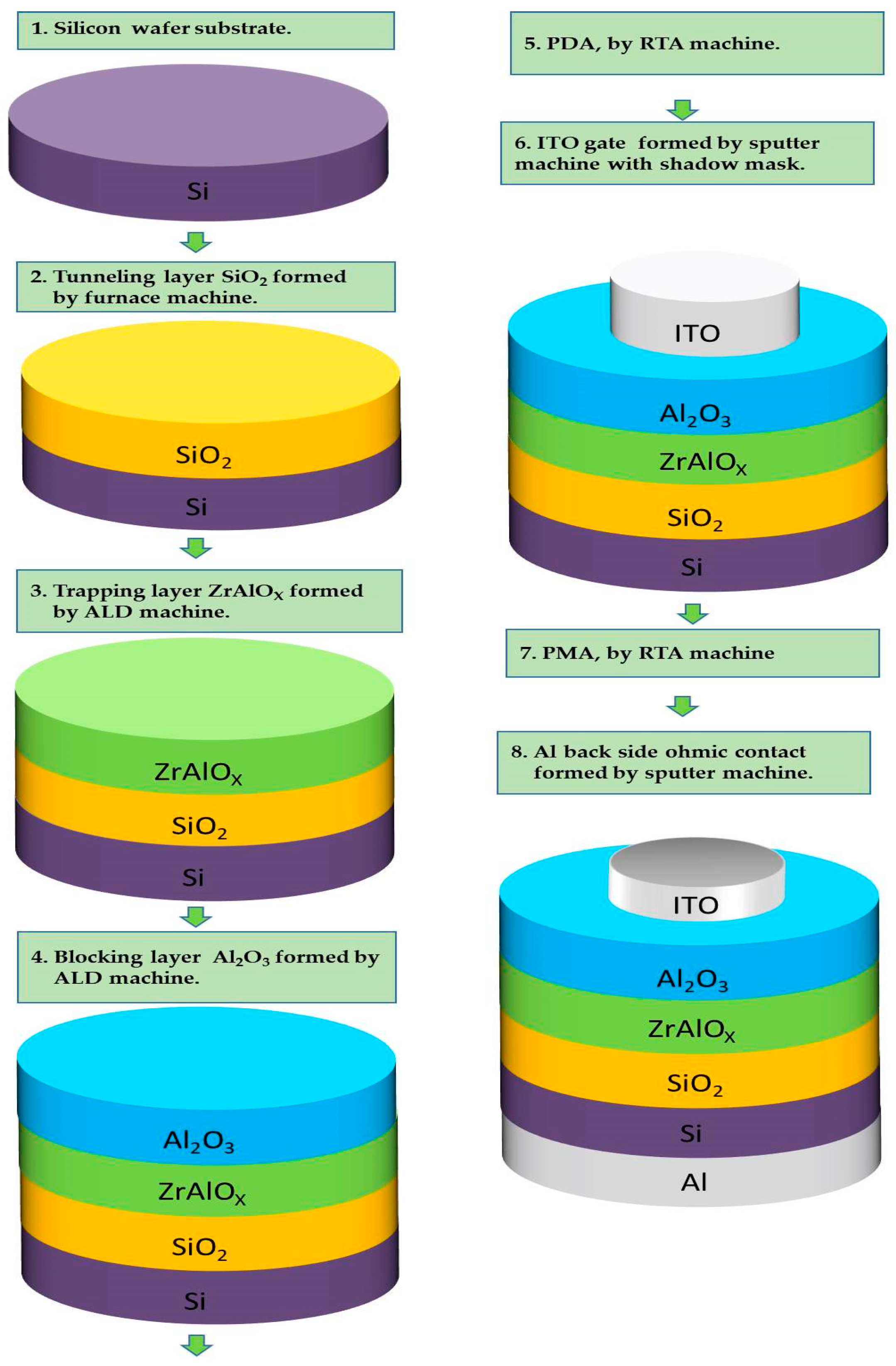
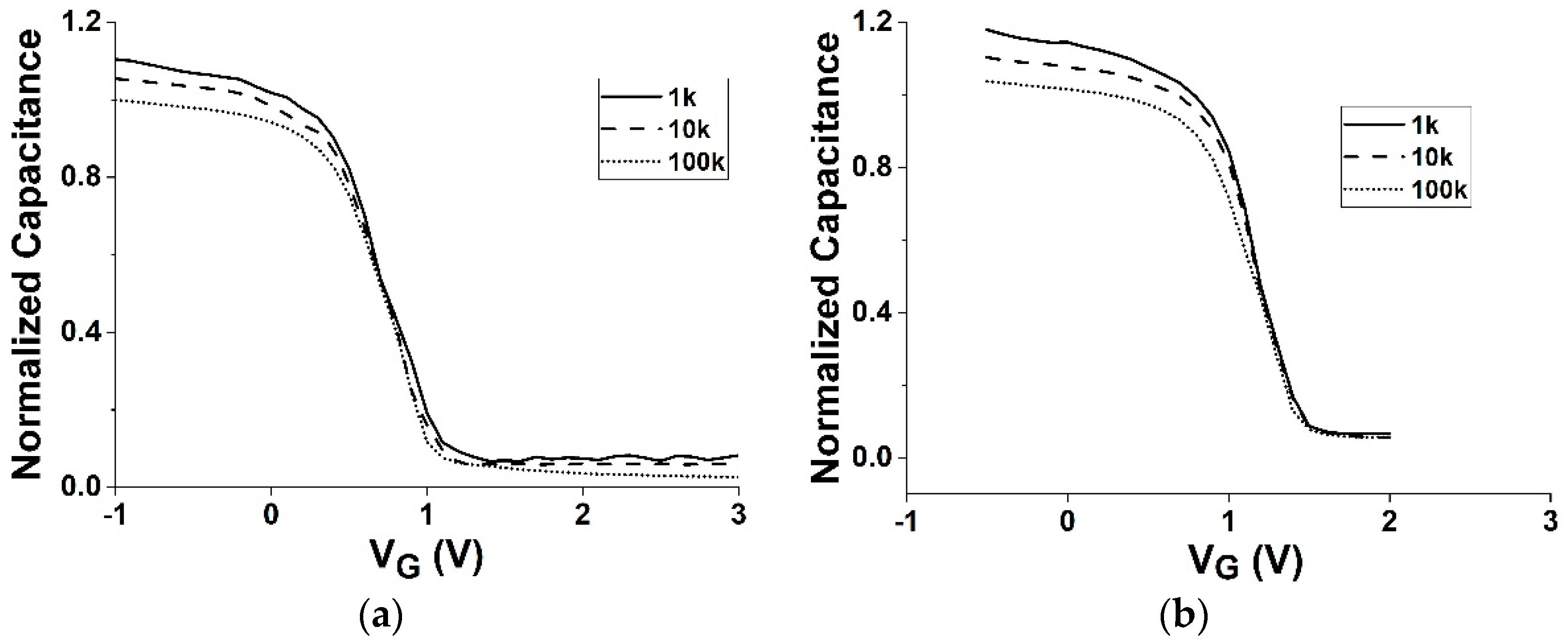
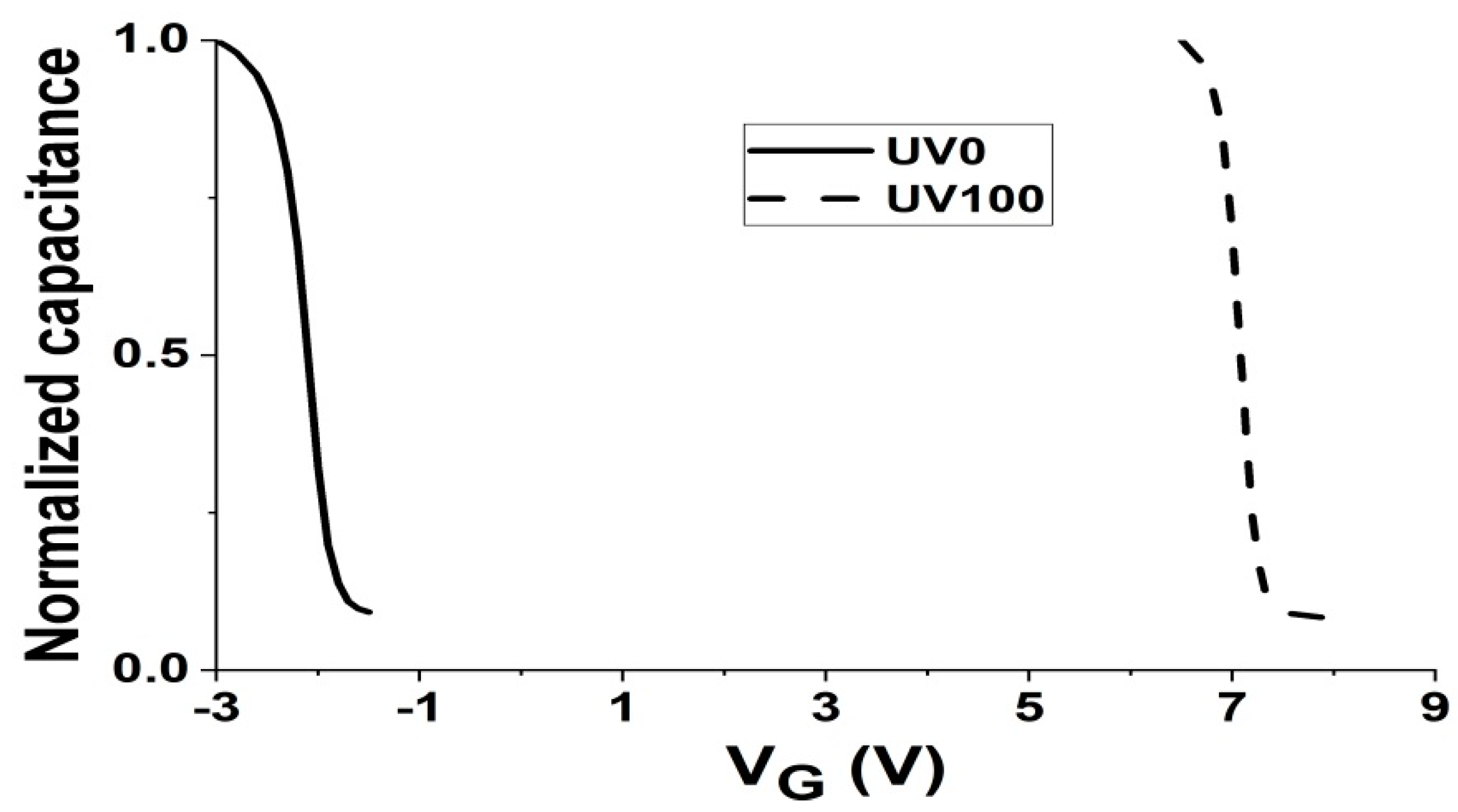
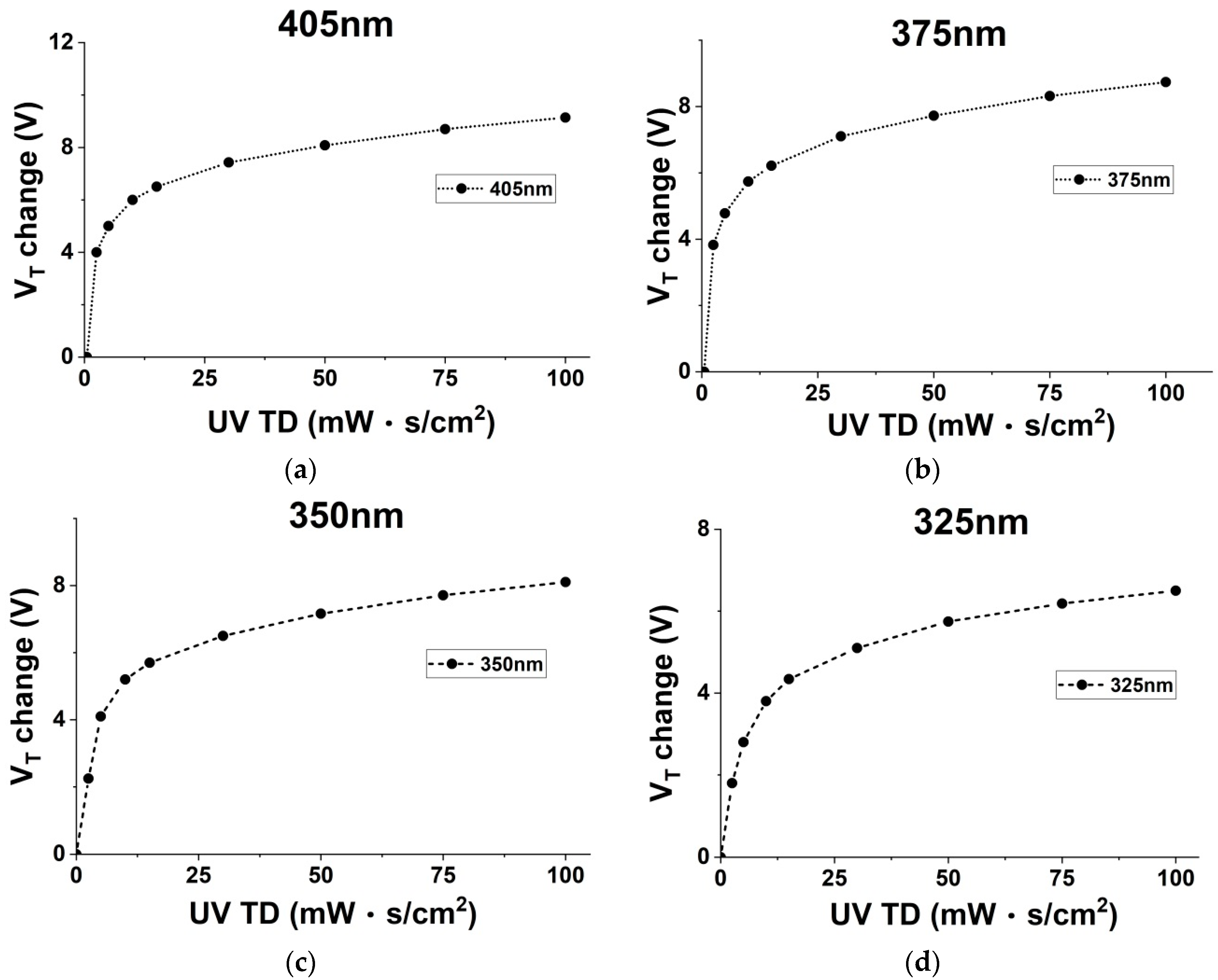
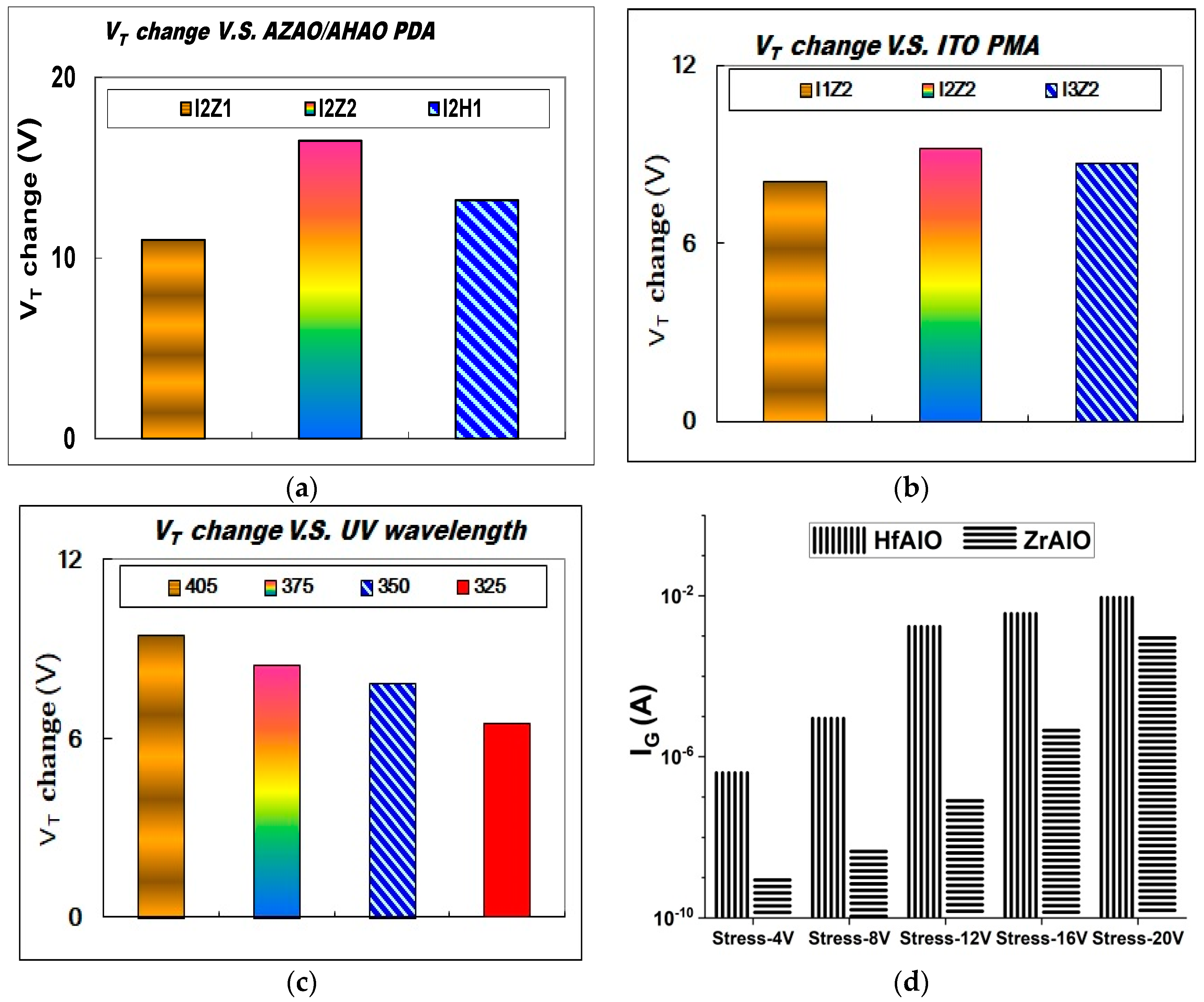
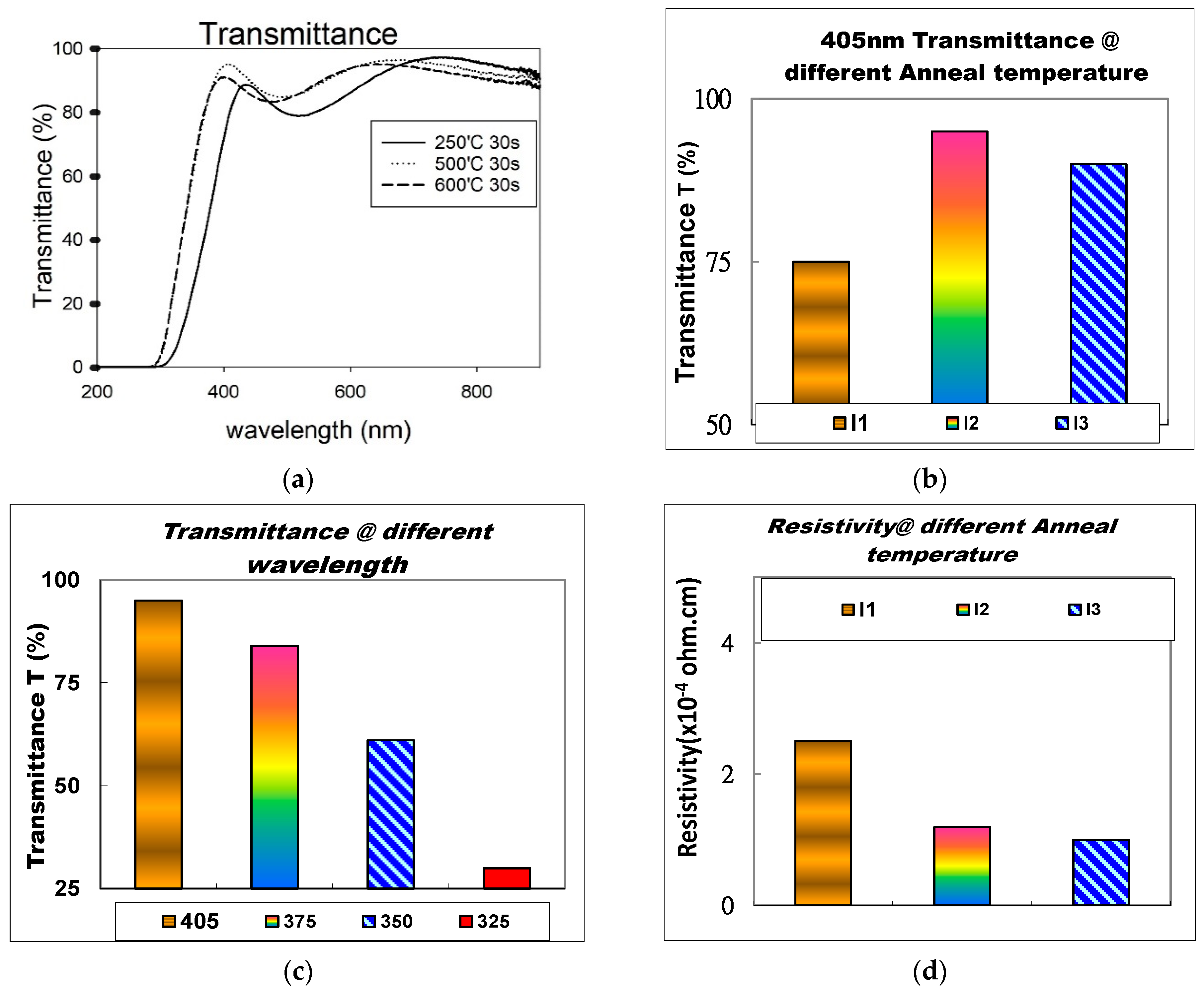
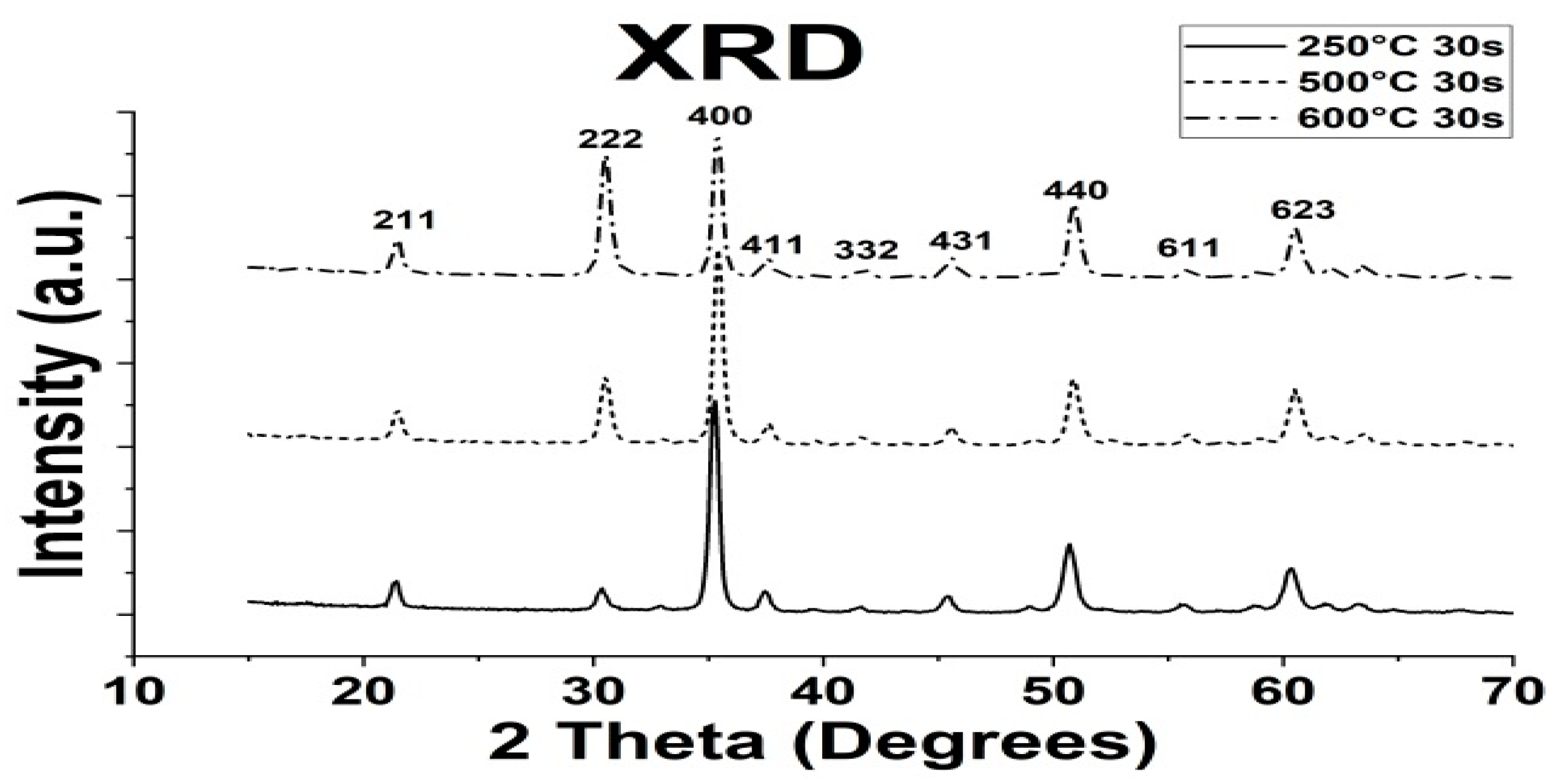
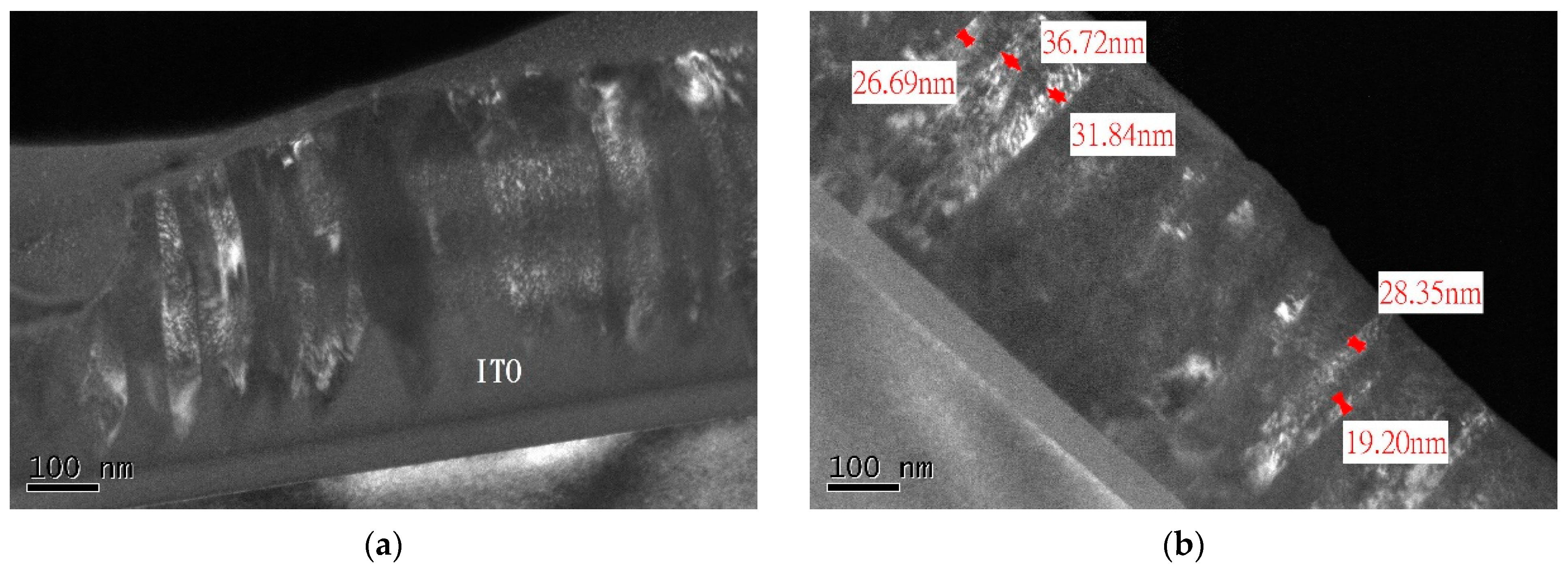
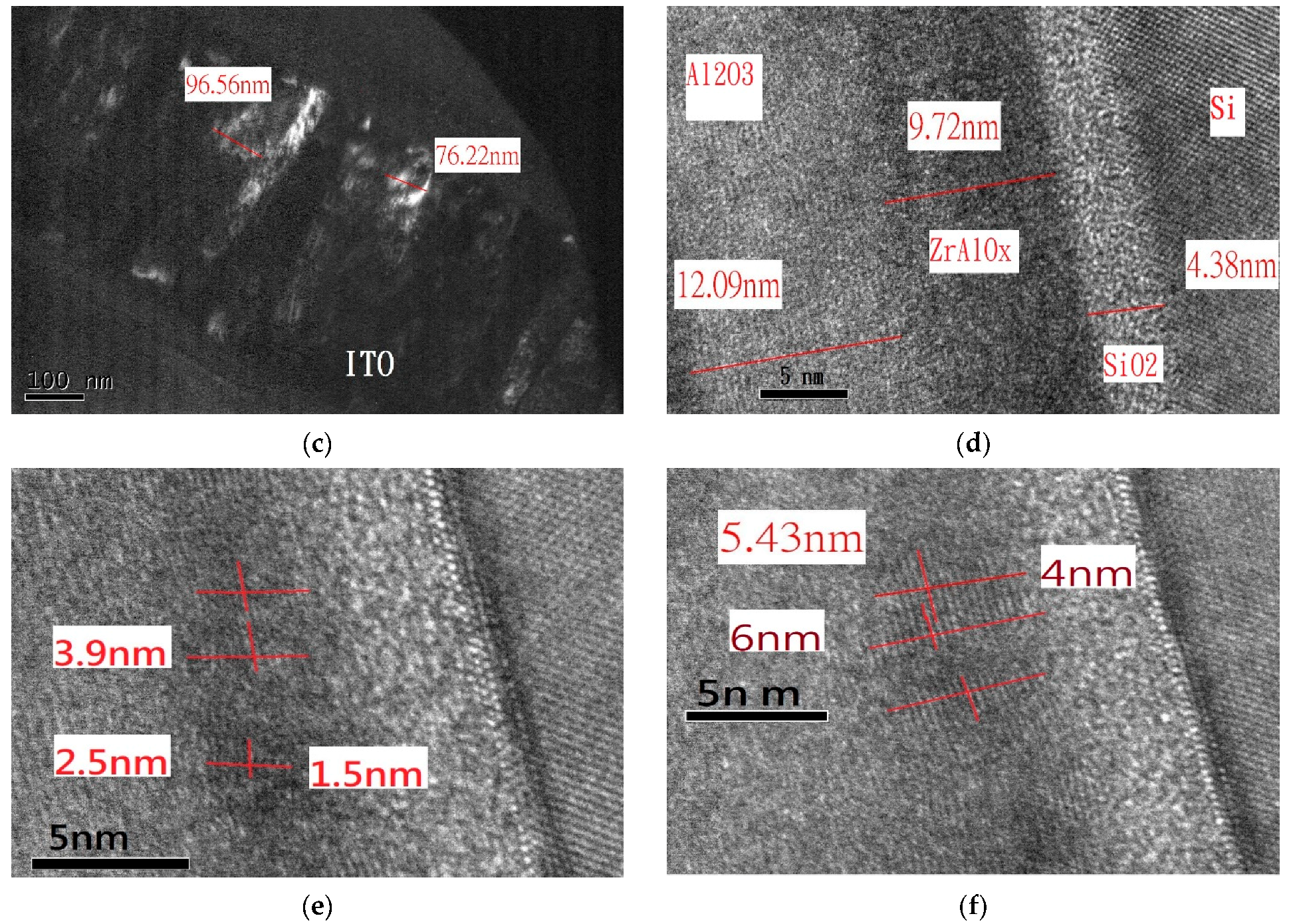
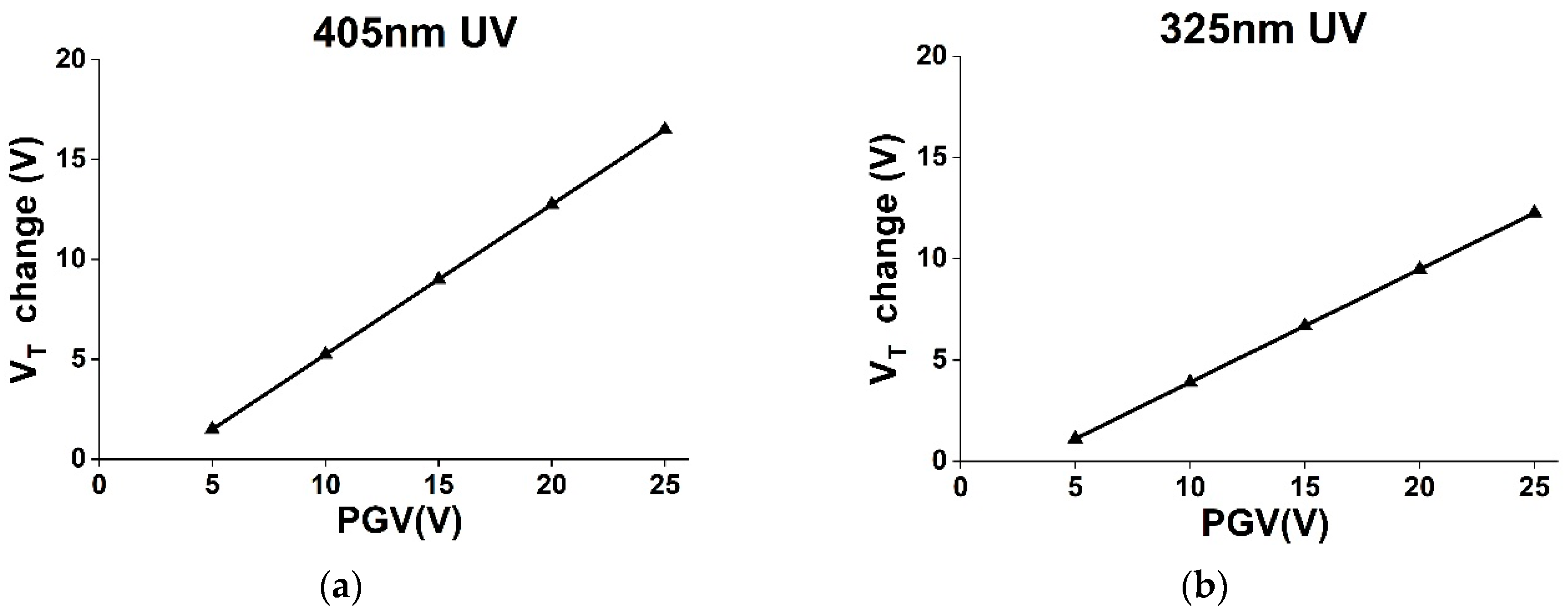
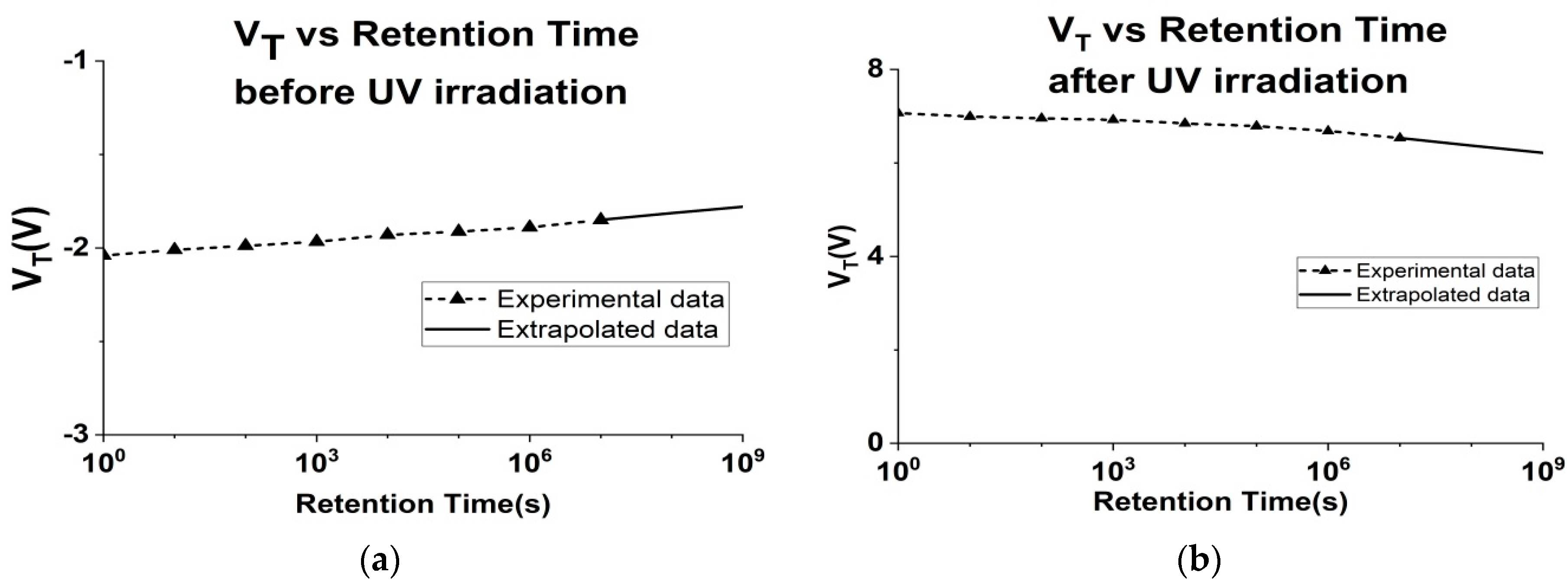
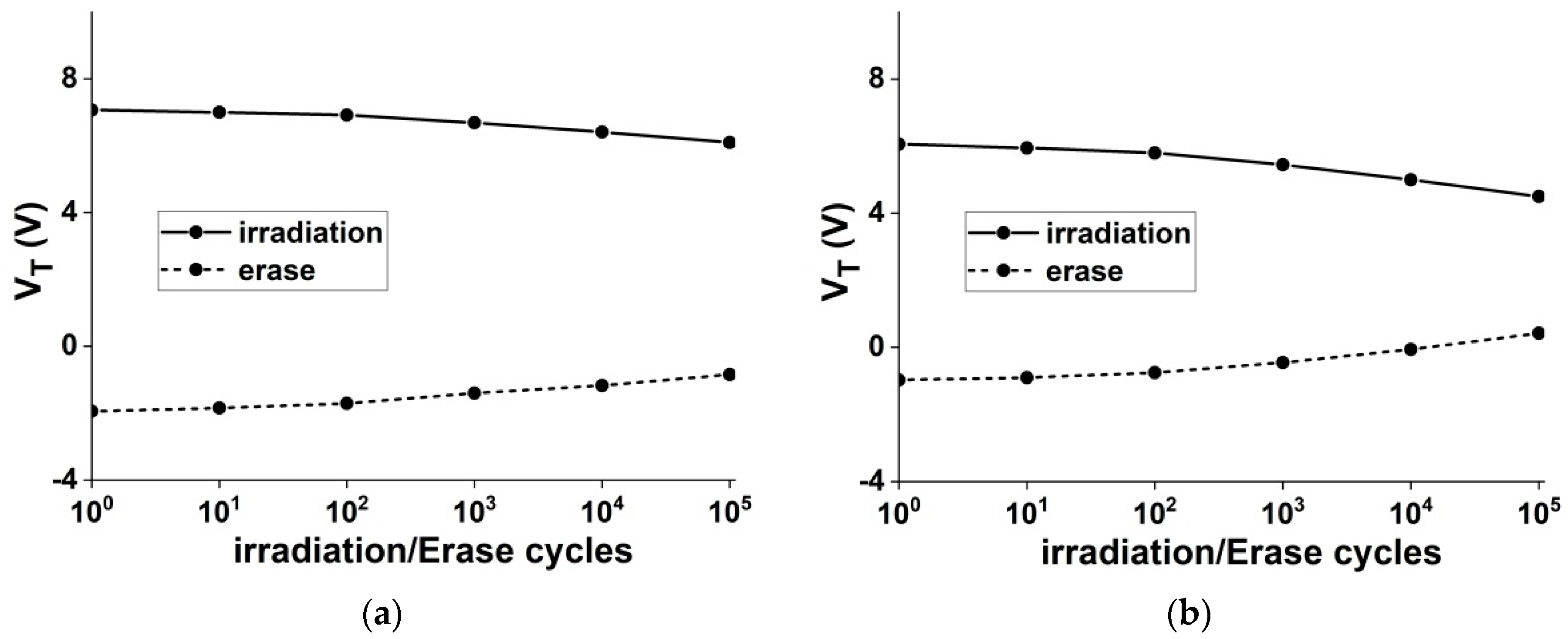
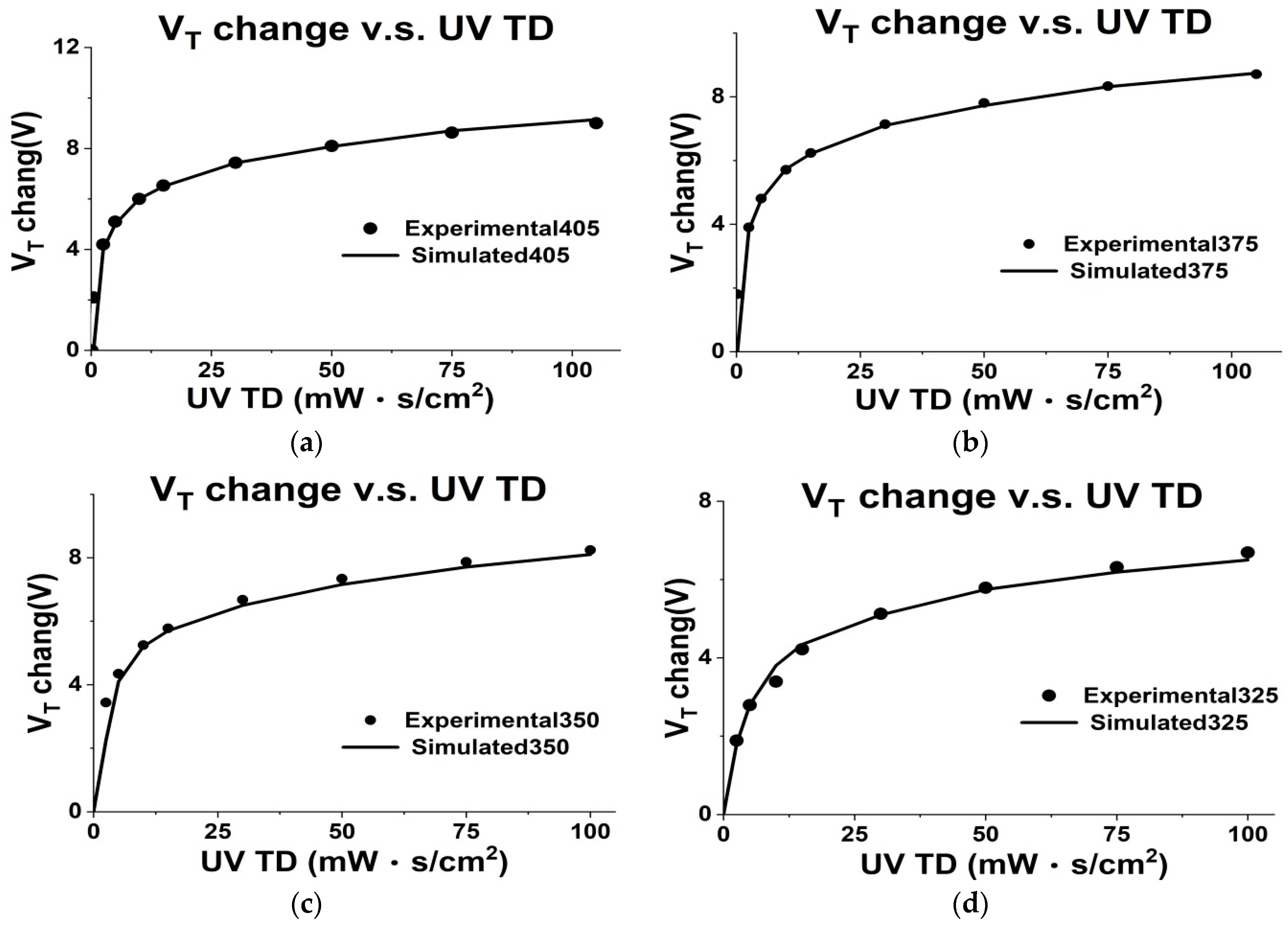
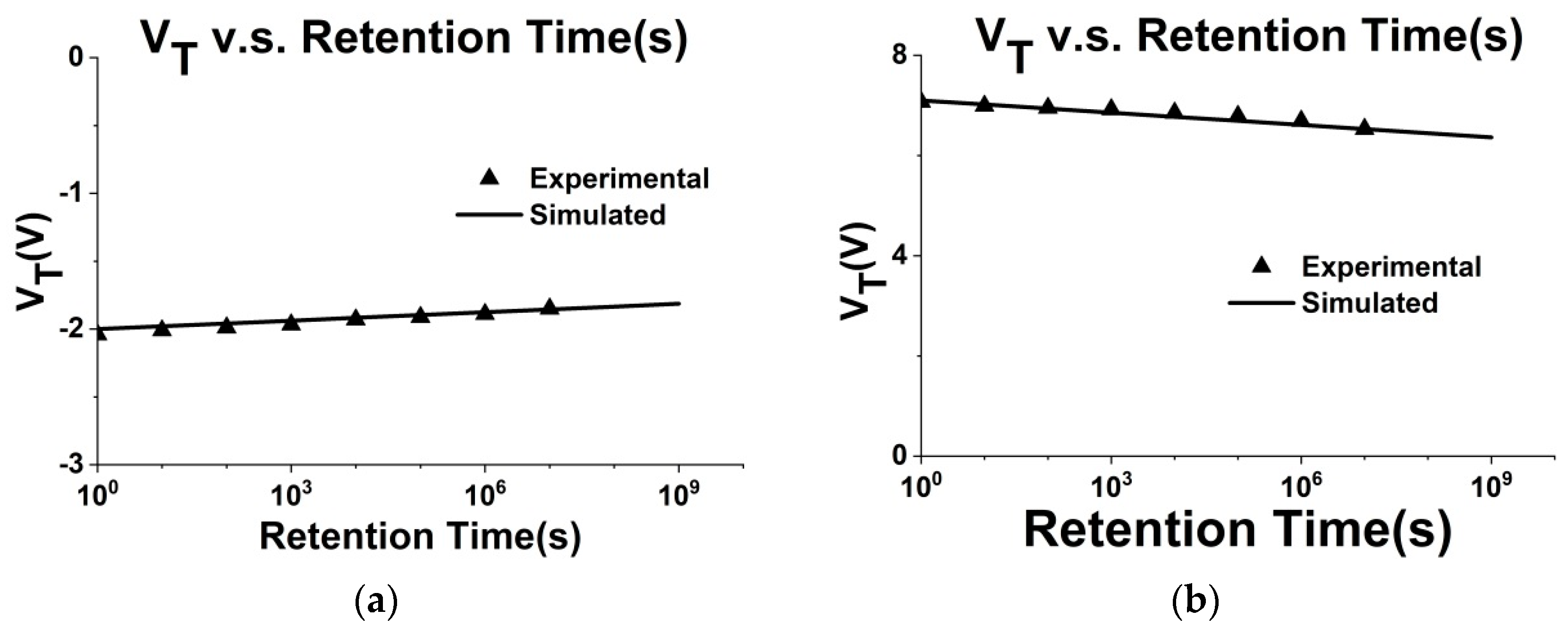
| Sensing Element | Sensing Principle | Sensitivity | Data Storage | Field Applications |
|---|---|---|---|---|
| Silicon diode | Voltage/Current transients | Low | Temporary | High-dose/Ionizing radiation |
| Silicon PIN | Voltage/Current transients | Low | Temporary | High-dose/Ionizing radiation |
| RADFET | Threshold voltage shift | Low | Temporary | High-dose/Ionizing radiation |
| FOXFET | Threshold voltage shift | Low | Temporary | High-dose/Ionizing radiation |
| FGMOS | Threshold voltage shift | High | Poor data retention | Low-dose/Non-ionizing radiation |
| SONOS | Threshold voltage shift | High | Good data retention | Low-dose/High-dose/Ionizing/Non-ionizing radiation |
| Split | I2Z1 | I2Z2 | I2H1 | I1Z2 | I2Z2 | I3Z2 |
|---|---|---|---|---|---|---|
| Gate conductor layer ITO PMA temperature (°C) | 500 | 500 | 500 | 250 | 500 | 600 |
| Gate conductor layer ITO PMA time (s) | 30 | 30 | 30c | 30 | 30 | 30 |
| Gate conductor layer material | ITO | ITO | ITO | ITO | ITO | ITO |
| Gate dielectric layer AZAO/AHAO PDA temperature (°C) | 900 | 1000 | 1000 | 1000 | 1000 | 1000 |
| Gate dielectric layer AZAO/AHAO PDA time (s) | 45 | 45 | 45 | 45 | 45 | 45 |
| Gate dielectric layer material | AZAO | AZAO | AHAO | AZAO | AZAO | AZAO |
| Symbol | UV TD (mW·s/cm2) | PGV (V) | UV Wavelength (nm) |
|---|---|---|---|
| W405UV0G15 | 0 mW·s/cm2 | 15 V | 405 |
| W405UV100G15 | 100 mW·s/cm2 | 15 V | 405 |
| W375UV100G15 | 100 mW·s/cm2 | 15 V | 375 |
| W350UV100G15 | 100 mW·s/cm2 | 15 V | 350 |
| W325UV100G15 | 100 mW·s/cm2 | 15 V | 325 |
| W325UV100G25 | 100 mW·s/cm2 | 25 V | 325 |
| W405UV100G25 | 100 mW·s/cm2 | 25 V | 405 |
Disclaimer/Publisher’s Note: The statements, opinions and data contained in all publications are solely those of the individual author(s) and contributor(s) and not of MDPI and/or the editor(s). MDPI and/or the editor(s) disclaim responsibility for any injury to people or property resulting from any ideas, methods, instructions or products referred to in the content. |
© 2023 by the authors. Licensee MDPI, Basel, Switzerland. This article is an open access article distributed under the terms and conditions of the Creative Commons Attribution (CC BY) license (https://creativecommons.org/licenses/by/4.0/).
Share and Cite
Jong, F.-C.; Hsieh, W.-C. Performance Comparison of SONOS-Type UV TD Sensor Using Indium Tin Oxide-Aluminum Oxide-Zirconia Aluminum Oxide-Silicon Oxide-Silicon and Indium Tin Oxide-Aluminum Oxide-Hafnium Aluminum Oxide-Silicon Oxide-Silicon. Crystals 2023, 13, 1092. https://doi.org/10.3390/cryst13071092
Jong F-C, Hsieh W-C. Performance Comparison of SONOS-Type UV TD Sensor Using Indium Tin Oxide-Aluminum Oxide-Zirconia Aluminum Oxide-Silicon Oxide-Silicon and Indium Tin Oxide-Aluminum Oxide-Hafnium Aluminum Oxide-Silicon Oxide-Silicon. Crystals. 2023; 13(7):1092. https://doi.org/10.3390/cryst13071092
Chicago/Turabian StyleJong, Fun-Cheng, and Wen-Ching Hsieh. 2023. "Performance Comparison of SONOS-Type UV TD Sensor Using Indium Tin Oxide-Aluminum Oxide-Zirconia Aluminum Oxide-Silicon Oxide-Silicon and Indium Tin Oxide-Aluminum Oxide-Hafnium Aluminum Oxide-Silicon Oxide-Silicon" Crystals 13, no. 7: 1092. https://doi.org/10.3390/cryst13071092
APA StyleJong, F.-C., & Hsieh, W.-C. (2023). Performance Comparison of SONOS-Type UV TD Sensor Using Indium Tin Oxide-Aluminum Oxide-Zirconia Aluminum Oxide-Silicon Oxide-Silicon and Indium Tin Oxide-Aluminum Oxide-Hafnium Aluminum Oxide-Silicon Oxide-Silicon. Crystals, 13(7), 1092. https://doi.org/10.3390/cryst13071092






